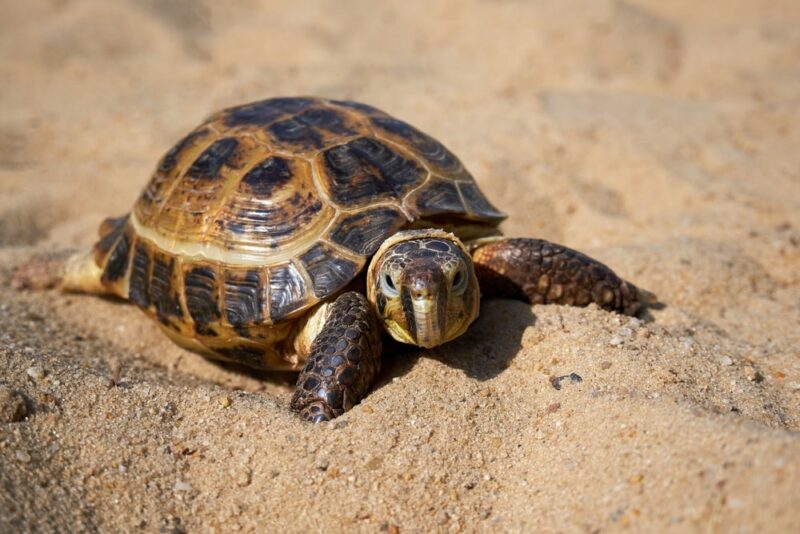How Big Does a Sulcata Tortoise Get? Average Weight & Growth Chart

Updated on
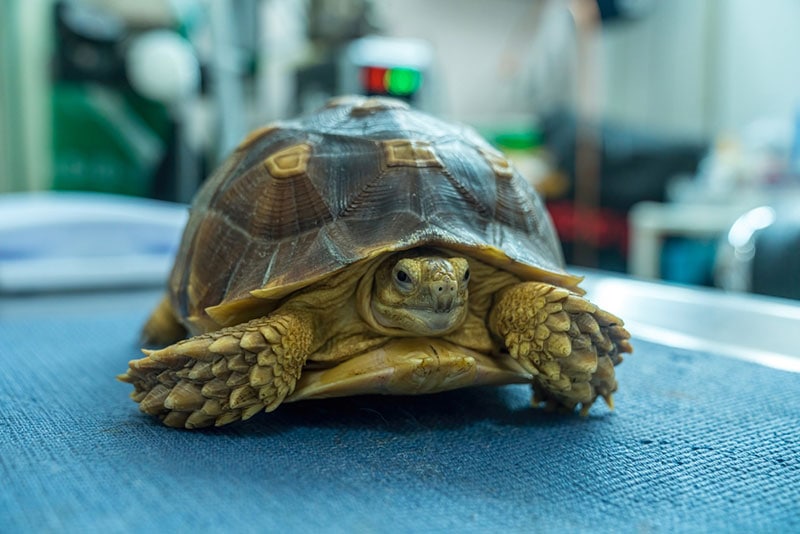
Click to Skip Ahead
Sulcata tortoises are highly sought after due to their unique appearance. Their tendency to grow into an impressive size intrigues many pet owners.
If you wish to bring one home, it’s normal to want to know how big they get and when the growing stops. After all, understanding these tortoises’ size and growth patterns is essential for their proper care and well-being.
So how big will your Sulcata tortoise get after you bring them home?
This article will answer this critical question and more. You will also learn how to accurately measure your tortoise and care for them.
Sulcata Tortoises Breed Overview
Sulcata tortoises, also called African spurred tortoises, have distinctive, highly domed carapaces and large, heavily scaled limbs, which help protect them in their natural habitat. These tortoises have unique characteristics that make them popular among reptile enthusiasts worldwide.
Here is a brief breed overview of this adorable pet.
Natural Habitat and Adaptations
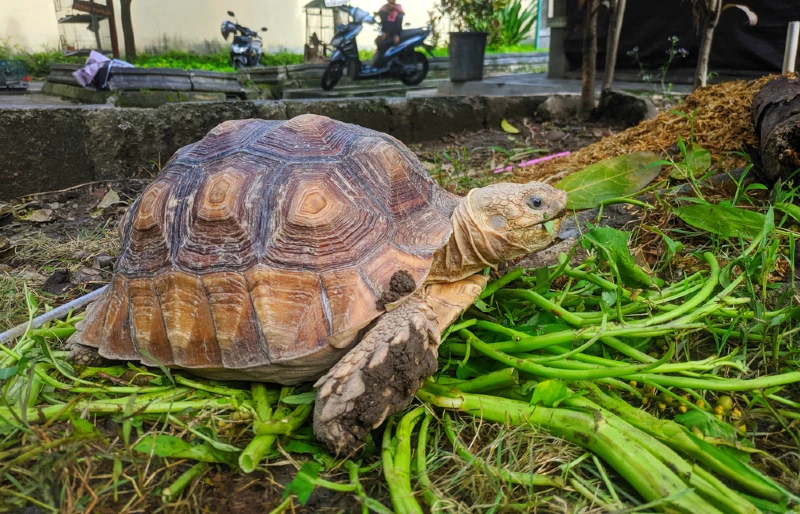
Sulcata tortoises originate from the arid regions of the Sahara Desert and the Sahel region of Africa. They have evolved to survive in these challenging environments through the years by developing unique adaptations.
For example, their highly domed carapace protects them from predators and extreme temperatures, while their large, scaled limbs aid in navigating rocky and sandy terrains.
Size and Physical Characteristics
Sulcata tortoises are renowned for their impressive size. They can reach lengths of between 24 and 30 inches (60 to 75 cm) and exceed 100 pounds in weight. Their large size, carapace, and overly scaled limbs make them an awe-inspiring sight.
Temperament and Behavior
Sulcata tortoises have a generally docile and gentle temperament. While they may not display overt affection, they can exhibit curiosity and form bonds with their human caretakers. They are diurnal creatures meaning that they are most active during the day.
Longevity and Lifespan
Sulcata tortoises live long, with some living for over a century. Usually, this is a result of proper care and a suitable environment. Consider their lifespan before owning one, as they may outlive you.
Sulcata Tortoise Size and Growth Chart
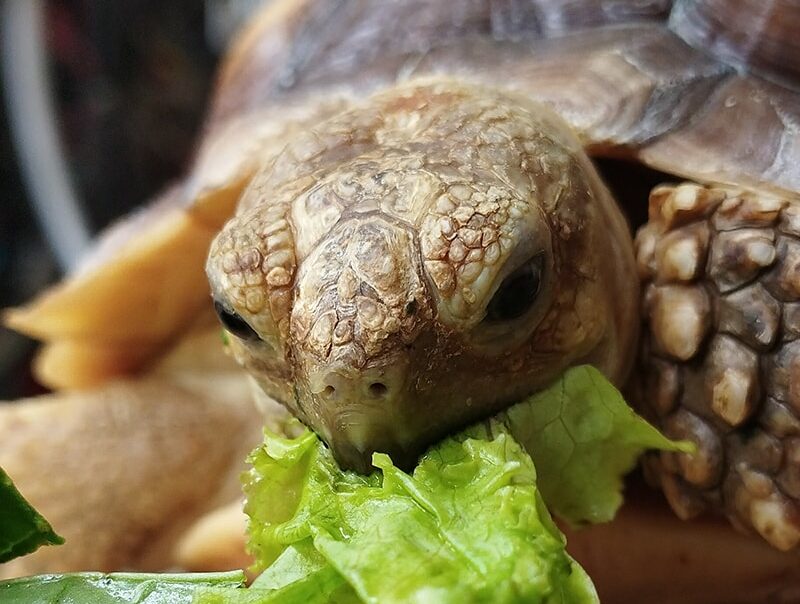
Sulcata tortoises go through four stages of growth: hatchling, juvenile, subadult, and adult. Hatchlings typically grow very quickly within the first few years of their lives. They reach sexual maturity after 10 to 15 years.
Their lifespan varies based on their environment. For example, they tend to live an average of 54 years in captivity. However, this increases to more than 75 years in the wild.
Interestingly, tortoises grow faster when there is more rainfall. Plenty of rainfall means a favorable environment for vegetation growth, which, in turn, means abundant and nutritious food promoting their growth and development.
More rainfall also ensures that the tortoises have access to more moisture, which helps to maintain their hydration levels and supports proper digestion.
Additionally, higher rainfall often leads to more favorable temperatures and humidity levels, creating an optimal environment for tortoises to thrive. These conditions can enhance their metabolic processes allowing them to utilize the available resources more efficiently.
| Age | Weight Range | Length Range |
| Hatchling (0–2 years) | 2–4 ounces | 2–4 inches (5–10 cm) |
| Juvenile (2-7 years) | 2–10 pounds | 6–10 inches (15–25 cm) |
| Subadult (7-15 years) | 10–30 pounds | 12–18 inches (30–45 cm) |
| Adult (15-20 years and beyond) | 80–120+ pounds | 24-30 inches (60–75+ cm) |
When Does a Sulcata Tortoise Stop Growing?
On average, the tortoises reach their full size and stop growing in length by the time they are around 15 years old.
Your Sulcata tortoise’s growth rate is more or less split into two phases. First, you can expect substantial increases in length and weight during the hatchling and juvenile stages. This will typically take about seven years.
The tortoises then hit their subadult phase, which typically spans from 7 to 15 years of age. During this phase, their growth rate gradually decreases until it stops when the tortoise hits its adult stage at 15 years.
Factors Affecting the Size of Sulcata Tortoise
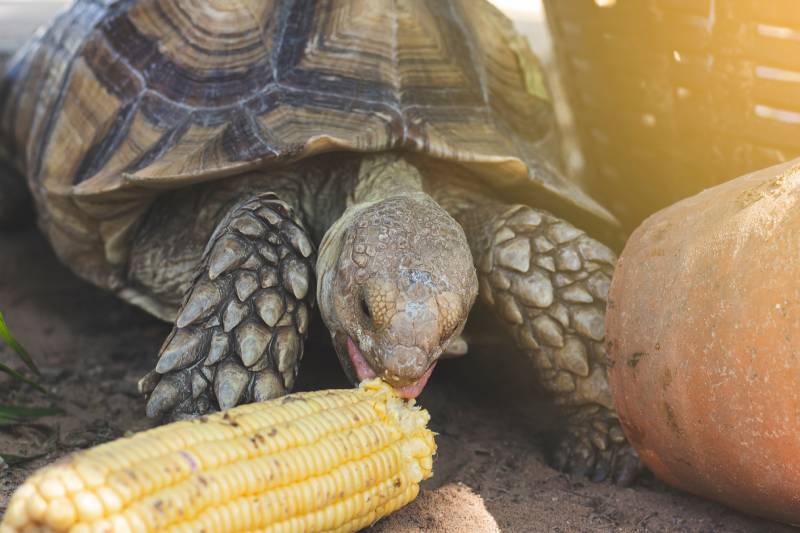
The size of a Sulcata tortoise depends on various factors. Understanding these factors is crucial for providing appropriate care and ensuring these magnificent reptiles’ healthy growth and development.
Genetics
A Sulcata’s genetic makeup is one of the most critical determinants of its potential size.
Some tortoises may have genetic traits predisposing them to larger sizes, while others may naturally remain smaller. Therefore, different individuals may have inherent genetic variations that can affect their growth rate and ultimate size.
Nutrition and Diet
What you feed your Sulcata tortoise will also determine how big they will get. Inadequate or improper nutrition can lead to stunted growth or other health issues. Conversely, overfeeding can lead to excessive weight gain and negatively affect their health.
Environmental Conditions
This reptile needs a suitable habitat with appropriate temperature, humidity, and lighting conditions.
Sulcata tortoises are ectothermic. This means that their environment regulates their body temperature. Therefore, provide a temperature gradient within their habitat, allowing them to move between warmer and cooler areas as needed. Ensure that the ambient temperature ranges between 75–90°F (24–32°C) during the day and slightly reduce it at night.
These animals require a moderately humid environment of around 40-60% to support proper hydration and shell health.
Again, appropriate lighting is essential for Sulcata tortoises as it affects their health and behavior. They also require UVA and UVB light access to synthesize vitamin D3, which aids in calcium absorption and shell development.
Sulcata tortoises also need access to ample space for exercise and proper basking areas for unhindered physical development.
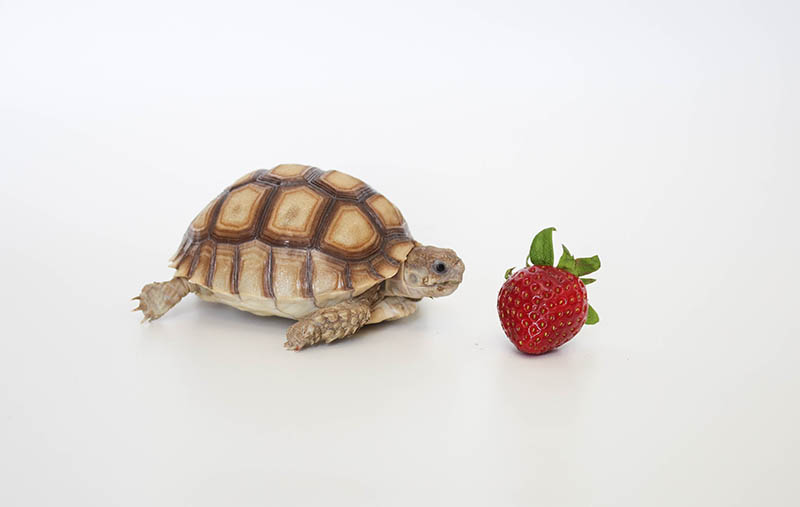
Sex
Sulcata tortoises are sexually dimorphic, with males being typically larger than females. They also have longer tails and larger shells.
This difference in size is primarily attributed to sexual maturity and breeding requirements. In their natural environment, male tortoises need to be larger to edge out other male competitors and establish dominance during mating. Their physical size makes it easier for them to breed successfully with the females and pass on their genes to the next generation.
On the other hand, female tortoises have smaller sizes as their reproductive role primarily involves producing eggs and caring for their offspring. Their smaller size allows for more efficient mobility and navigation during the nesting and egg-laying process.
Health and Veterinary Care
A tortoise’s overall health can influence their growth and size. Create a regular veterinary check-up schedule and adhere to proper healthcare practices. Such diligence is essential to identify and address any health issues hindering growth.
It is also crucial to adhere to parasite control and disease prevention measures.
Ideal Diet for Maintaining a Healthy Weight
Maintaining a healthy weight is crucial for the overall well-being and longevity of your Sulcata tortoises. An appropriate diet plays a significant role in managing weight and preventing health issues associated with obesity or malnutrition. The following are some things to consider.
High-Fiber Hay
A staple component of the diet should be high-fiber grass hay, such as Timothy hay or Bermuda grass hay. These provide essential fiber for proper digestion. They also help prevent overeating in tortoises, which can harm their digestive system. Hay should be available at all times for the tortoise to graze on.
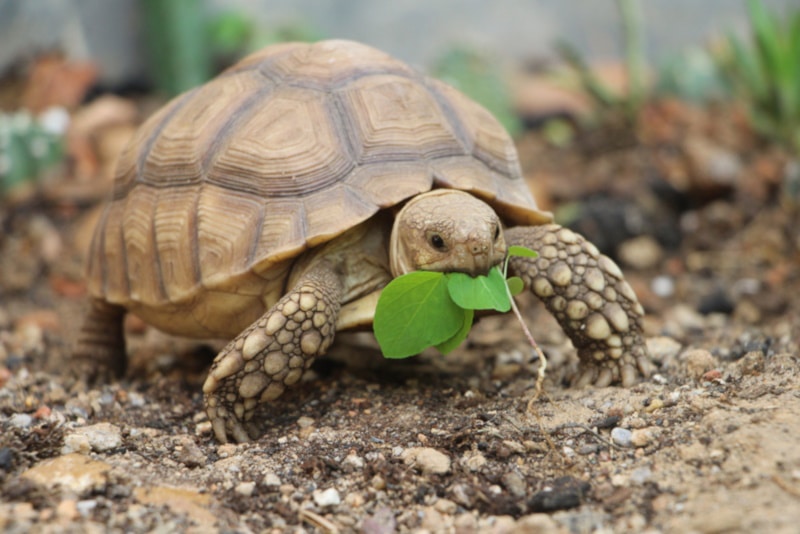
Variety of Leafy Greens
Offer a diverse range of leafy greens to ensure a balanced diet. Try feeding them dandelion greens, collard greens, mustard greens, kale, and romaine lettuce. Create a feeding schedule that allows you to rotate the greens regularly to provide different nutrients and flavors.
Fruits and Treats
Fruits can be included in the diet. However, offer them sparingly because they have a high sugar content. Consider feeding your tortoise small amounts of berries, melons, and occasional treats like bananas or apples.
Refrain from overindulging in treats as well as they can lead to weight gain. Moderation is key to preventing excessive sugar intake.
Avoid High-Fat and High-Protein Foods
Sulcata tortoises are herbivores and should not eat high-fat or high-protein foods. Avoid dog or cat food, dairy products, and fatty meats. Feeding your tortoise such foods can lead to obesity and other health issues.
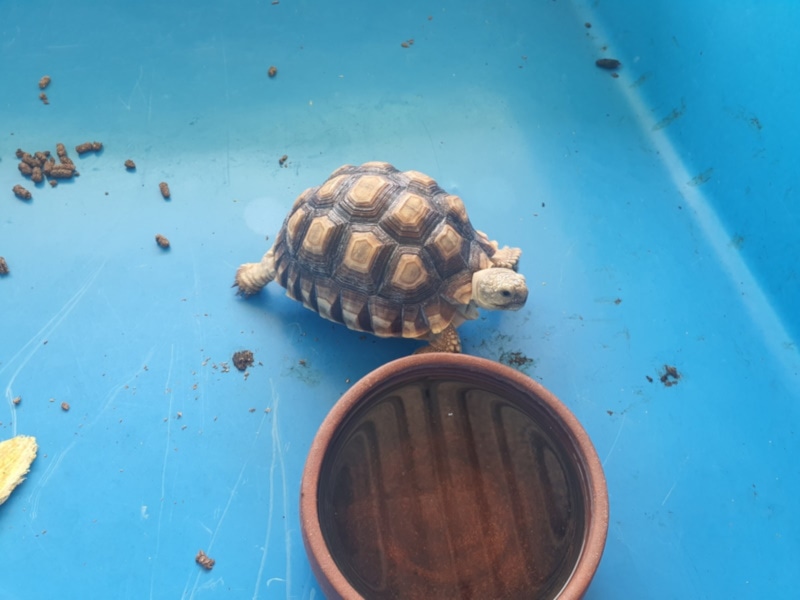
Calcium and Vitamin Supplements
Provide calcium supplements such as calcium carbonate powder to ensure proper bone and shell development. Additionally, a reptile multivitamin supplement is ideal a few times a month to guarantee a balanced nutrient intake.
Fresh Water
Always provide fresh, clean water for drinking and soaking. Proper hydration is essential for digestion and overall well-being.
How to Measure Your Sulcata Tortoise
Start by finding a calm and comfortable area to handle your tortoise safely. Ensure the tortoise is calm and relaxed before measuring it to avoid causing stress or injury.
You will need a measuring tape or ruler. Ensure the measuring tool is flexible and can easily wrap around the tortoise’s shell. Once you have your ruler or tape measure in place, gently lift the tortoise and support its body using both hands. Avoid putting excessive pressure on the shell, limbs, or head. Keep a firm but gentle grip to ensure control during the measuring process.
Next, place your measuring tape or ruler along the top of the tortoise’s shell. Start measuring from the base of the head and extend towards the tail. Ensure the measuring tool follows the contour of the shell, taking into account any curves or indentations. Once done, take note of the measurement in inches or centimeters.
Finally, record the measurements for future reference. Keep a growth chart or log to track your tortoise’s progress. Throughout the measuring process, prioritize the comfort and safety of your tortoise. Minimize the duration of handling and ensure a calm and stress-free environment.
Conclusion
Sulcata tortoises can grow to be quite large. The first 15 years of their lives involve rapid growth, which allows them to reach their full length. They may continue to gain weight throughout their lives, though.
Genetics, diet, environmental conditions, and overall health influence their growth. Therefore, it is important to provide a suitable habitat, regular monitoring, and proper nutrition for their healthy development and long-term well-being.
Remember to consult a reptile veterinarian experienced in tortoise care for specific guidance and to ensure the best care practices for your Sulcata tortoise. By providing appropriate care and attention, you can help these magnificent creatures thrive and enjoy a fulfilling life for many decades.
Featured Image Credit: thirawatana phaisalratana, Shutterstock



